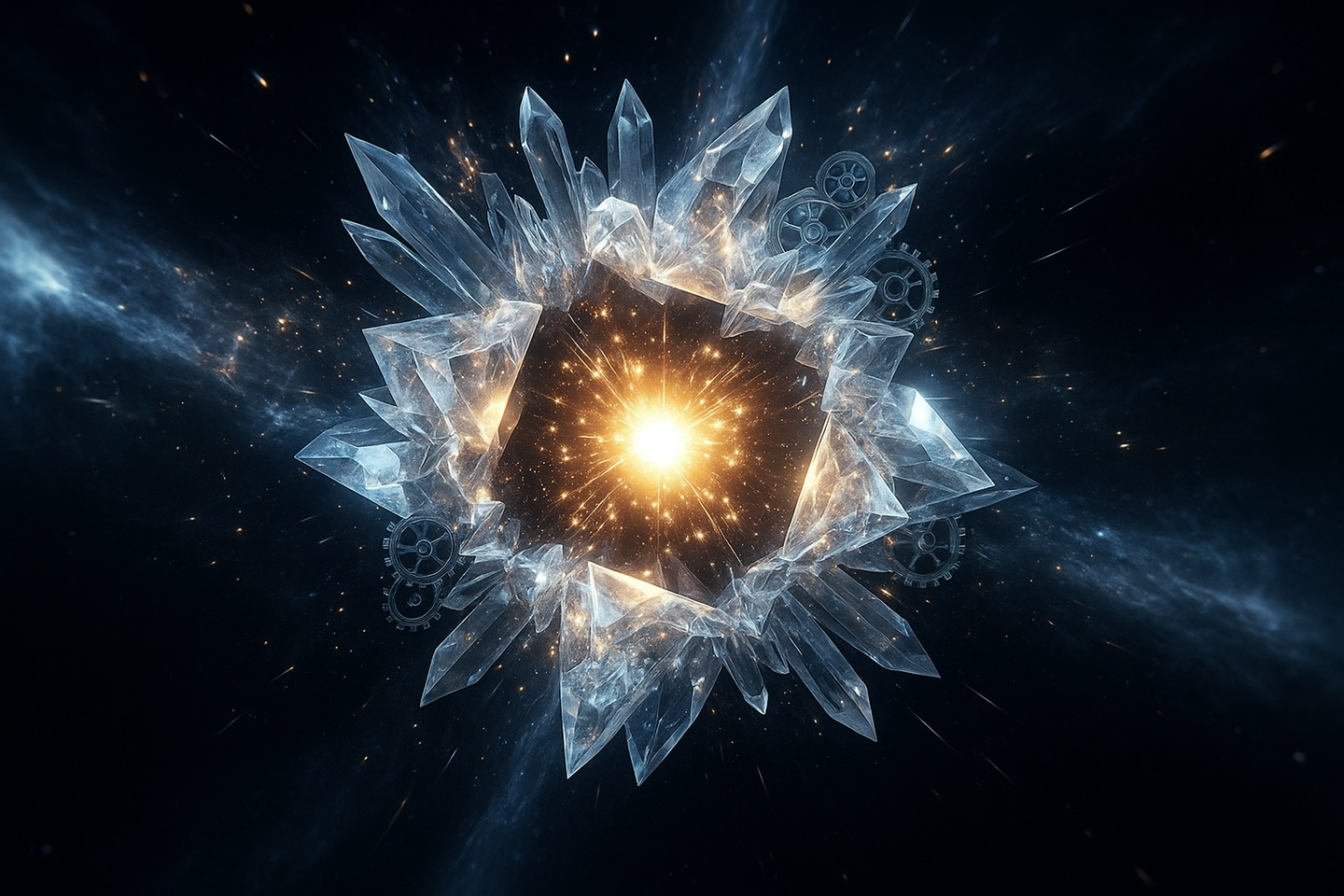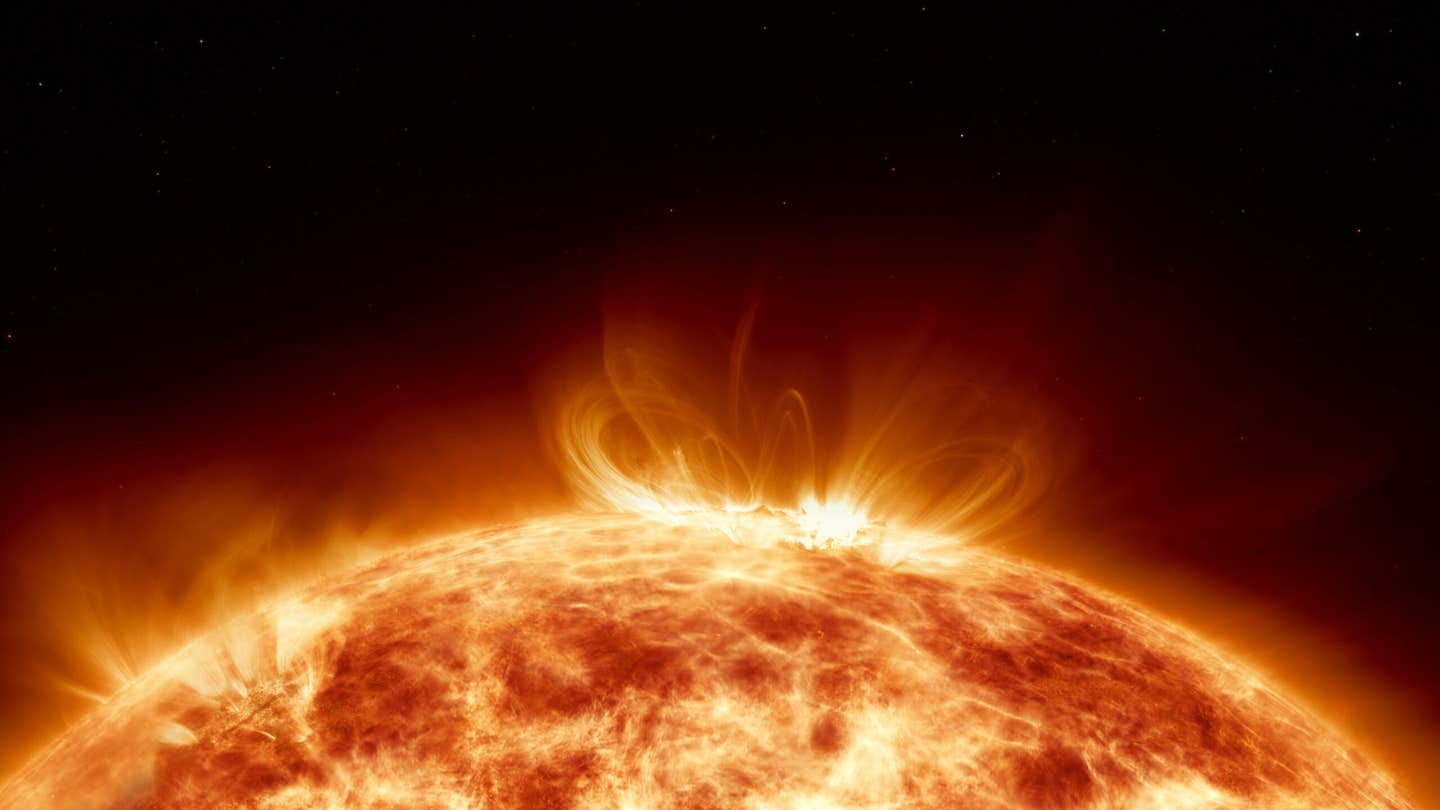Scientists create new time crystals that are visible to the naked eye
Scientists at CU Boulder create visible time crystals in liquid crystals that could revolutionize security and data storage.

 Edited By: Joseph Shavit
Edited By: Joseph Shavit

Physicists at CU Boulder have created shimmering “time-moving” crystals from liquid crystal materials, revealing a new form of matter. (CREDIT: AI-generated / The Brighter Side of News)
If you were able to visualize the passage of time, it may appear as looping ribbons of color, these fragments ribboning and glinting whenever they refracted light. Researchers at the University of Colorado Boulder have come close to making that a reality. They’ve created what they refer to as "continuous space-time crystals," a type of strange material that moves in repetitive cycling motion via shifts through both space and time. These materials pulse, undulate, and flow in a rhythmic cycling manner that never appears to stop.
Physicists had long believed that this type of behavior was only possible in exotic quantum systems that occupy a region outside the touchable world. Now, researchers have harnessed time crystals using materials that are common to your day-to-day experience, specifically the same liquid crystals that create your phone's display. What they found could influence the future of technology, including secure data storage and counterfeit-proof identification.
From a Simple Light to a World in Motion
In this study, scientists Hanqing Zhao and Ivan Smalyukh placed a thin, flat layer of liquid crystals between two glass covers, devising a material that had a dye that reacts to the blue light they shone, which has a wavelength of around 450 nm. Wavelengths have specific signatures when it comes to energy that will change how molecules behave.
In simple terms, certain colored lights possess specific energy, and certain molecules are predisposed to behave differently when light's energy is emitted via light waves. For example, the dye molecules began to change shape, nudging the liquid crystals nearby. That is when a new and invisible world began to come alive.
To the eye and under the microscope, this world appeared as colorful, complex stripes that were swirling and seemingly never still. They began to pulse, fold, and re-form in patterns that repeated, at least in appearance, over and over, like an endless beating heart. The researchers did not need to add energy or to actually shake the sample. Once light initiated the motion, the system remained self-sustaining.
"All it takes is shining a light, and this entire world of time crystals comes into bear," said Smalyukh, a physics professor and fellow at the Renewable and Sustainable Energy Institute.
What it Means for Matter to Move With Time
Crystals often indicate structure: salt, quartz, and diamonds form regular spatial patterns of atoms that are stable, solid structures. Time crystals are not limited to those definitions. Their structure repetitively operates in both space and time. In other words, they generate rhythmic motion anywhere, separately from an influx of continuous outside energy.
This repetition of motion breaks what physicists call "time symmetry." To put it in common terms, it would be like taking a clock battery out, and the clock keeps ticking. Scientists have shown that time crystals are possible over the past decade, whereas at one time it was thought to be impossible. The discovery by the Boulder team lays claim to a time crystal existing in "soft matter," which is astonishingly visible- it's a completely new doorway opened up in the realm of physics.
Zhao said their version is visible under a microscope, and sometimes even with the naked eye. "You can see them directly,” he said. "You don't need to use a fancy detector. You can just watch it move."
The Science Behind the Move
To understand how this can happen, think about the light and molecules as dance partners. The light pushes the dye molecules, and they twist the liquid crystal molecules around. This interaction initiates a series of motion waves that propagate through the material, producing so-called “spatiotemporal solitons,” self-sustaining structures of wave-like behavior maintaining both rhythm and order.
The scientists reasonably adjusted the polarization and brightness of the light to control the rate at which the liquid crystals oscillated. This generated waves that produced forms that were stable, repeated, and could persist for hours. Subsequent measures confirmed that the effect was genuine and not related to noise or vibration.
By using precise measurements of 77 millipascal-seconds of viscosity, a cell thickness of 3 micrometers, and a surface strength of 10⁻⁵ joules per square meter, they demonstrated how naturally time-based behavior stemmed from the physics of the materials themselves.
Technology Concealed in Beauty
In addition to the beautiful visual effects, these continuous space-time crystals (CSTCs) may have far-reaching applications. One application is in anti-counterfeiting. Because every crystal develops a unique time-based pattern when illuminated, it becomes a sort of motion fingerprint. The idea is that in the future, identification cards, currency, and official materials could be created with secret "time watermarks". Then a user simply shines light on the surface of an identified material and looks for a specific rhythm to verify authenticity.
A one-centimeter square sample takes less than 0.0002 grams of liquid crystal, and a coating of approximately 10⁻¹⁴ grams of ultra-thin dye to replicate. This leads to the idea that they are inexpensive, scalable, and environmentally friendly.
The team believes CSTCs may also be useful for cryptography and data storage. The researchers can encode information not only through space, like pixels or barcodes, but also through time, by varying the rhythm, or phase, of each oscillation. Essentially, one light-driven patch of material could contain thousands of bits of information per second, all in complex and stable repeating patterns.
This three-dimensional approach to data storage may one day give rise to new forms of optical communication, where light itself becomes the carrier and the code.
Rewriting the Laws of Physics
Prior to this study, time crystals had primarily been confined to quantum systems, such as those investigated in superconductors, or even Google’s Sycamore quantum computer. These extreme systems were only able to exist under extreme conditions, such as a vacuum chamber, lasers, or almost absolute zero.
The team from Colorado expressed that something similar can happen in standard environments and at room temperature. Their result challenges the notion that this ordering, or time crystalline order, has to be related to quantum nature at all - but may simply be a general property of nature, maybe whenever some form of symmetry is broken.
Smalyukh suggests this discovery expands the native physics of understanding. “It suggests a deep relation between symmetry and time, not just theoretical, but also in the physical world around you.”
“It’s not just another material,” he said. “It’s a new way to think about matter and motion.”
Looking Ahead
The time crystal research from Zhao and Smalyukh, backed by the U.S. Department of Energy, could potentially define a new class of techniques and strategies from optical chips to quantum computing. The researchers even filed a patent application by the university for future technologies based on CSTC.
Because liquid crystals are commonplace, it may be easier to integrate CSTC into existing systems without having to build new factories or components. They may also become part of existing phone screens, sensors, and communication systems that use liquid crystals already.
Smalyukh noted, "I feel like having opened a door that was unknown." When the light touched the liquid crystals, an entirely new order came to life, creating a world that dances infinitely between the intervals of time.
Practical Applications of the Research
The implications of the findings could open the door to new technologies involving aesthetics, art, science, and security. The CSTC may inspire and enable a new class of anti-counterfeiting designs, ultra-secure methods of encrypting information, and high-bandwidth data techniques.
Encoding information through time, in addition to spatial encoding, may redefine optical communication systems and photonic computing.
More broadly, this discovery hints that time crystalline behavior may exist among other natural systems, creating new classes of dynamic and self-organizing materials that mimic the dance of life.
Research findings are available online in the journal Nature Materials.
Related Stories
- Time Crystals: A New Frontier in Quantum Physics
- Physicists discover new crystals that don’t form in space, but in time itself
- Scientists make first-ever measurement of quantum uncertainty in real-time
Like these kind of feel good stories? Get The Brighter Side of News' newsletter.
Joshua Shavit
Science & Technology Writer and Editor
Joshua Shavit is a Los Angeles-based science and technology writer with a passion for exploring the breakthroughs shaping the future. As a co-founder of The Brighter Side of News, he focuses on positive and transformative advancements in AI, technology, physics, engineering, robotics and space science. Joshua is currently working towards a Bachelor of Science in Business and Industrial Engineering at the University of California, Berkeley. He combines his academic background with a talent for storytelling, making complex scientific discoveries engaging and accessible. His work highlights the innovators behind the ideas, bringing readers closer to the people driving progress.



